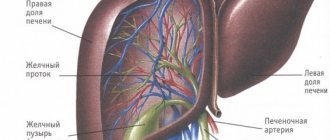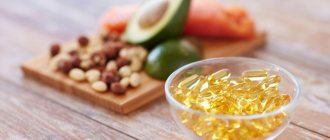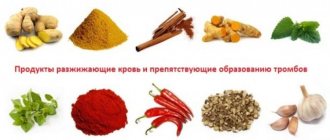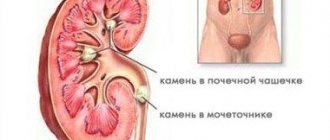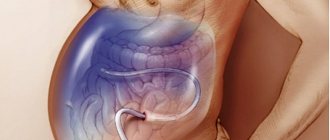Many people believe that they can get the necessary minerals and vitamins through food intake. This is a false misconception. An incorrect diet and a lack of many foods in the daily diet contribute to the fact that the level of beneficial components in food is constantly decreasing. In this regard, medical experts recommend taking multivitamin complexes and synthesized drugs that will help restore the lack of nutrients.
For a full life, the human body simply needs vitamins, in particular aloe vera. The metabolic process involves amino acids, vitamins and minerals, of which there are about 20 types. They are responsible for the functioning of the immune system and internal organs.
Before starting a course of treatment, it is recommended to consult a doctor who can choose the right dosage to avoid side effects.
What are vitamins for?
Vitamins play an important role in human life. Taking medications helps restore the body after a protracted illness or infection that has negatively affected your health.
Vitamins perform one of the main functions in the human body. They promote energy metabolism, ensure the production of enzymes, normalize the functioning of the nervous system, restore healthy sleep, and improve well-being.
Vitamins should be taken in small quantities so as not to cause harm to the body. Typically, intake is limited to a few milligrams.
Solubility
Vitamins are fat-soluble and water-soluble. The dosage and course of taking multivitamins will depend on the solubility of the drug.
Fat soluble
This group includes vitamins A, D, E, soluble in fats, and can accumulate in the human body. Their excess often causes poisoning and poor health.
Fat-soluble vitamins are taken with fatty foods. Nuts, salad or avocado seasoned with vegetable oil help the body quickly absorb it.
Water soluble
They dissolve in water, do not accumulate in cells, and in excess they are quickly eliminated from the body. This group includes vitamins C, niacin, folic and pantothenic acids.
It is advisable to take it in the morning, half an hour before meals or after meals.
What to look for
Vitamins are complex organic compounds. Each vitamin makes its own irreplaceable contribution to the life of the body. When taking vitamins, it is very important to remember the dosages and courses, and also consider the interaction of some vitamins with each other. Some substances may cause allergic reactions, so it is better to consult a doctor before use.
Remember that dosages are individual, they depend on the person’s activity - an athlete needs more support with vitamins and minerals than a person who does not play sports. It is also necessary to take into account the time of year, physiological needs and individual characteristics of a person. For example, a person who has had a cold needs much more vitamins.
In any case, take care of yourself, listen to your body and provide it with vitamin support on time.
Conclusion
If your diet is not entirely balanced, consider how you can diversify it and include foods rich in vitamins. Vitamin tablets should be taken if you have increased vitamin requirements or if you are actively involved in sports.
When choosing vitamins, give preference to a trusted manufacturer.
Articles on our website are presented for educational and informational purposes only. We do not recommend using article materials as medical advice. If you decide to take dietary supplements or make fundamental changes to your diet, first consult with a specialist.
In this video, nutritionist Stanislav Sheremetyev will talk about the main vitamins and who should take them and when:
Review of the most useful vitamins
Vitamin A
The fat-soluble drug affects vision, the skeletal system, and provides resistance to infections.
A large amount of vitamin A is found in beef, pork, and chicken liver - up to 6,400 mcg, in carrots - up to 830 mcg. Milk, dairy products, currants, potatoes, green vegetables and eggs also contain vitamins that are beneficial to the body.
The daily intake rate for children is 10 mg, for adults - 0.5 mg.
Vitamin B
The group includes thiamine, niacin, biotin, pyridoxine, riboflamin. It is a water-soluble type and regulates carbohydrate metabolism.
Vitamin B improves the functioning of the cardiac system, strengthens muscles, and helps fight excess weight. If there is a deficiency, an imbalance in the digestive system may occur, appetite decreases, and nausea appears. Changes also occur in the cardiovascular system, the disease is accompanied by fatigue and weakness.
Vitamin B is found in potatoes, soy flour, yeast, kidneys, liver and heart of animals, milk, eggs.
The daily dose for children is up to 2.0 mg, for adults - from 1.5 to 2.5 mg.
Vitamin C
It is one of the most famous. It is water soluble and performs a number of functions: stimulates the synthesis of hormones, restores the functioning of the immune system,
provides resistance to negative environmental factors. Lack of vitamin C in the body leads to frequent acute respiratory infections and scurvy.
Vitamin C is found in large quantities in citrus fruits, bell peppers, and broccoli.
The daily dose for children is 40-70 mg, for adults - 60-90 mg.
Vitamin D
Affects the condition of the teeth, skeletal system, controls body weight. It belongs to the fat-soluble type and has an anti-racism effect.
Vitamin D is found in fish oil, fish liver, butter, eggs, red meat, and yeast.
The daily intake rate for children is 11 mcg, for adults - 2.2 mcg.
Vitamin E
The fat-soluble substance acts as an antioxidant, protects against blood clots, and prevents tissue oxidation. A deficiency leads to the appearance of pigment spots, infertility, weakness, depression, and blurred vision.
Vitamin E is found in nuts, butter, liver, cereals, almonds, and seeds.
Daily norm: 15-20 mg.
Food components, called vitamins, are organic substances that are necessary in small quantities for the normal functioning of the body. Vitamins are extremely diverse in their chemical structure. Vitamins were first discovered in food products in 1880 by Russian scientist N.I. Lunin, who, by feeding experimental animals with natural and artificial food, became convinced of the existence of these vital substances.
Vitamins got their name from the Latin word “vita” (“life”) and the word “amines” (the chemical compound NH2).
Soviet scientists under the leadership of B. A. Lavrov and A. V. Palladin made a great contribution to the development of vitaminology (the science of vitamins).
Vitamins perform highly specific functions in cell metabolism. Often they are part of enzymes that catalyze metabolic processes. Vitamins enter the body with food and are considered essential nutritional factors. Currently, more than 30 types of vitamins have been discovered, each of which has a chemical name and many of them have a letter designation of the Latin alphabet (C ascorbic acid, B1 - thiamine, etc.). Retinol (vitamin A) ensures the functional activity of the visual organs and regulates the function of the immune system. Contained in products of animal origin. Products of plant origin (carrots, spinach, lettuce, parsley, green onions, sorrel, red pepper, black currants, blueberries, apricots, etc.) contain carotene, which is provitamin A.
The body produces vitamin A from carotenoids. Carotenoids are found in the green parts of plants. The group of carotenoids includes a-, B-, y-carogines and cryptoxanthin. Only p-carotene contained in food products is biologically active. The physiological need for vitamin A ranges from 450 to 1000 mcg/day. for children and 800-1000 mcg/day. for adults.
Calciferol (vitamin D) is necessary to regulate calcium absorption. The main representatives of group D vitamins are ergocalciferol (vitamin D2) and cholecalciferol (vitamin D3). The need for calciferol in adults has not been precisely established; in children it is 100,400 IU/day. A significant amount of calciferol contains fish oil, caviar, red fish, and chicken eggs.
Tocopherol (vitamin K) is one of the main nutritional antioxidants that prevents increased lipid peroxidation. Tocopherols are found in green parts of plants, especially in young sprouts of cereals. A large number of tocopherols are found in vegetable oils (sunflower, cottonseed, corn, peanut, soybean, sea buckthorn). Some quantities of them are also found in meat, fat, eggs, and milk. The physiological need for tocopherol ranges from 3 to 15 mg/day. for a child and 10 mg/day. for adults.
Phylloquinones (vitamin K) are necessary for the synthesis in the liver of functionally active forms of prothrombin, as well as other proteins involved in the regulation of blood coagulation processes. Vitamin K is part of biological membranes. The physiological need for vitamin K is 0.2-0.3 mg/day. The main sources of phylloquinones are vegetables (cabbage, tomatoes, pumpkin) and liver. Up to 50% of the vitamin K requirement can be provided by endogenous synthesis of intestinal bacterial flora.
Thiamine (vitamin B1) is directly involved in carbohydrate metabolism. If it is deficient, the oxidation of pyruvic acid is disrupted and polyneuritis develops, historically known as beriberi disease. Vitamin B1 deficiency can develop when eating refined carbohydrates, in patients with chronic alcoholism due to an increased need for this vitamin, and when consuming foods containing the antivitamin factor thiaminase (fish). Sources of thiamine are baked goods made from wholemeal flour, most cereals, legumes, liver and other by-products, and brewer's yeast. The daily requirement is determined in relation to the energy value of the diet: per 1000 kcal there should be 0.6 mg of vitamin B1.
Riboflavin (vitamin B2) is part of a number of redox enzymes and is involved in the regulation of protein, fat and carbohydrate metabolism. The main causes of riboflavin deficiency are chronic diseases of the gastrointestinal tract and a lack of milk and dairy products in the diet. The daily requirement for vitamin B2 is 0.8 mg per 1000 kcal of energy value. The main sources of riboflavin, in addition to milk and dairy products, are meat, eggs, fish, liver, bread, buckwheat and oatmeal. Niacin (vitamin PP) plays the role of an electron carrier in redox reactions in the body. With a lack of niacin, pellagra develops with persistent diarrhea, dermatitis of the skin, face and exposed parts of the body. The secretion of gastric juice and the sensitivity of skin reflexes are disrupted, irritability and psychosis appear. The daily requirement for vitamin PP is 6.6 mg per 1000 kcal of energy value. The main sources of niacin are yeast, cereals, wholemeal bread, legumes, offal, meat, fish, dried mushrooms.
Pyridoxine (vitamin B6) as a coenzyme is involved in the functioning of the enzyme systems of carbohydrate and lipid metabolism. Pyridoxine is present in many foods. Sources of vitamin B6 include liver, yeast, whole grain cereals, fruits, vegetables and legumes. The daily requirement for vitamin B6 directly depends on protein intake. An adult requires 2 mg/day of vitamin B6. The need for pyridoxine increases during pregnancy and lactation, taking certain medications, and with heart failure. The daily dose of pyridoxine for children is 0.4-2 mg.
Cyanocobalamin (vitamin B12) is involved in the construction of a number of enzyme systems and affects hematopoietic processes. Sources of cyanocobalamin are beef, offal (liver, heart), chicken meat, eggs. Nutritional deficiency of cyanocobalamin is possible in vegetarians, pregnant women, chronic alcoholism, impaired synthesis of internal Castle factor, hereditary defect in the synthesis of proteins involved in the transport of vitamin B12. The daily requirement for vitamin B12 in adults is 3 mcg, in pregnant women - 4 mcg.
Ascorbic acid (vitamin C) is involved in many biochemical processes, promotes regeneration and wound healing, maintains resistance to stress and provides immunobiological resistance to harmful biological agents of the external environment. Ascorbic acid plays a special role in ensuring normal permeability of the vascular wall.
The participation of vitamin C in maintaining homeostasis helps maintain performance, prevent fatigue and irritability. Ascorbic acid is not synthesized or deposited in the body, so the need for vitamin C is ensured only by its intake from food. High-quality sources of ascorbic acid are vegetables and fruits, primarily rose hips, black currants, sea buckthorn, sweet peppers, dill, parsley, citrus fruits, and rowan.
The daily requirement for ascorbic acid is determined in accordance with energy requirements. Per 1000 kcal of energy value of the daily diet there should be 25 mg of vitamin C.
INFLUENCE OF STORAGE DURATION, MECHANICAL AND THERMAL TREATMENT ON THE VITAMIN COMPOSITION OF FOOD PRODUCTS
During food storage and cooking, vitamins undergo changes, especially water-soluble B vitamins and ascorbic acid. Negative factors that reduce the C-vitamin activity of vegetables and fruits are: sunlight, air oxygen, high temperature, high humidity and water in which the vitamin is highly soluble. Enzymes contained in food products accelerate the process of its destruction. Vegetables and fruits must be supplied to catering establishments of high quality in accordance with the requirements of current GOSTs, which guarantees their full nutritional value. When storing vegetables and fruits in warehouses, it is necessary to maintain a certain regime, air temperature not higher than +3 ° C, relative humidity 85-95%. Warehouses must be well ventilated and not have daylight. It is necessary to strictly observe the shelf life of vegetables and fruits. During mechanical processing, long-term storage and exposure of peeled vegetables, fruits and mushrooms in water is unacceptable, since vitamin C oxidizes and dissolves.
When cooking, vegetables and fruits should be placed in boiling water or broth, completely immersed. They need to be cooked with the lid closed, boiling evenly, avoiding overcooking.
For salads and vinaigrettes, it is recommended to cook vegetables unpeeled, thereby reducing the amount of vitamin C and other nutrients. Vitamin C is greatly destroyed during the preparation of vegetable purees, cutlets, casseroles, stews and slightly when frying vegetables in fat. Secondary heating of prepared vegetable dishes and their contact with oxidizing parts of technological equipment lead to the complete destruction of this vitamin.
In order to preserve vitamin C, the deadlines should be strictly observed. conditions for storage and sale of ready-made vegetable and fruit dishes. The shelf life of hot dishes should not exceed 1-3 hours at a temperature of 65-75 °C, cold dishes 6-12 hours at a temperature of 6 °C. B vitamins are largely preserved during cooking. But it should be remembered that an alkaline environment destroys these vitamins, and therefore you should not add baking soda when cooking legumes. To improve the absorption of carotene, all orange-red vegetables (carrots, tomatoes) should be consumed with fat (sour cream, vegetable oil, milk sauce), and added to soups and other dishes in sautéed form.
Currently, catering establishments quite widely use the method of artificial fortification of ready-made food. The organization of this work is entrusted to managers and catering workers, and control over the correct fortification of food is carried out by sanitary and food inspection authorities. Particular attention is paid to fortifying food in preschool institutions, boarding schools, colleges, hospitals, and sanatoriums.
Ready-made first, second and third courses are enriched with ascorbic acid before serving food at the rate of 100 mg per serving for adults. 50 mg per serving for children over 7 years of age and 35 mg for children under 7 years of age.
Ascorbic acid is introduced into dishes in the form of powder or tablets, previously dissolved in a small amount of food.
Enrichment of food with vitamins C, B, PP is organized in canteens for workers of some chemical enterprises in order to prevent diseases associated with production hazards. An aqueous solution of these vitamins, 4 ml per serving, is added daily to prepared foods.
The food industry produces fortified products: milk and kefir fortified with vitamin C; margarine and baby flour, enriched with vitamins A and D); butter enriched with carotene; bread made from premium flour, enriched with vitamins B1, B2, PP, etc.
How to use
Vitamins can have different effects on the human body. The need for them will depend on the age category, gender, specific activity, physical activity, weather conditions, and general well-being. If unfavorable conditions prevail, the need for vitamins increases significantly, since the metabolic process works at an increased rate.
In hot climates, mineral components and water-soluble vitamins are released in large quantities and therefore require constant replenishment.
In the first half of the day, vitamins are absorbed better; B vitamins, vitamins C and E are well suited for use. Minerals should be taken in the afternoon.
For health, you need to consider not only the dosage, but also the dosage schedule. You should not immediately take a bunch of vitamins for a month, as the result will not bring the expected effect. Taking vitamins daily in equal doses will be much healthier and healthier.
Will a “magic pill” with 30 ingredients save us?
The Russian Academy of Medical Sciences claims that 80% of us suffer from a lack of vitamins. Their quantity in food products is catastrophically decreasing every year. However, you should not mindlessly drink all the vitamins in a row. Not all of them are “equally useful”, as in the famous advertisement.
Studies have shown that iron is not absorbed together with calcium. An overdose of vitamins A and D is worse than a deficiency. B vitamins can cause allergies. Beta-carotene and selenium do not protect against cancer. Large doses of vitamin C do not protect against colds. We need a reasonable approach.

